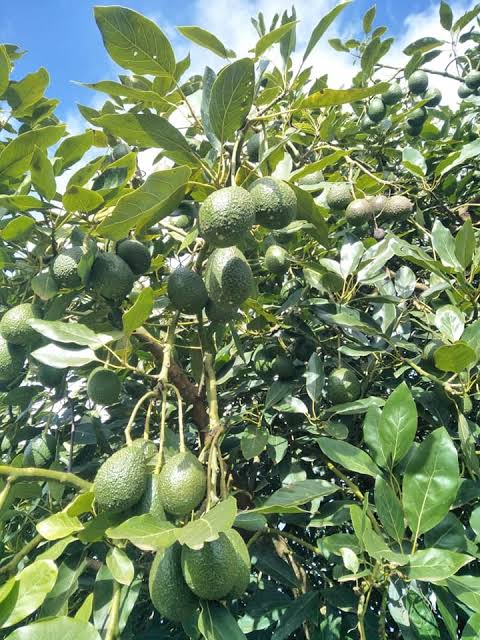In recent years, Hass avocado farming has become increasingly popular in Kenya, driven by its high demand both locally and internationally. Farmers across the country, particularly in regions like Meru, are reaping the benefits of cultivating this premium variety of avocado. Hon Kinoti Gatobu has been at the forefront of this movement, offering free Hass avocado seedlings to farmers in Meru, ensuring that they have the best start in their avocado farming journey.
Avocados, which are native to South America and Mexico, have a long history in Kenya, having been introduced in the 18th century by the Portuguese. The country soon embraced improved avocado varieties, including Linda, Puebla, Nabal, and Lula, before settling on the highly profitable and globally popular Hass variety. Since then, avocados have become an economic pillar, with Kenya’s first successful commercial avocado farm established in 1923 by the Anderson family in Kitale.
Hass avocado trees, known for their resilience and high yield, require specific care to achieve maximum productivity. The recommended planting distance is 7m x 7m (80 plants per acre), although farmers with smaller land can plant at 5m x 5m (140 plants per acre). While the trees take about four years to start bearing fruit, they can yield up to 30 fruits by the third year, and production increases gradually. By the tenth year, a mature tree can produce over 1500 fruits, with the potential to earn farmers up to Ksh. 1.8 million per tree.
Intercropping is a beneficial practice during the early years, with crops like cabbage, kale, peas, or beans being planted alongside avocados to provide additional income while the trees mature. Farmers are also advised to store ripe avocados in airtight containers in the fridge to prolong freshness, ensuring they can meet market demand.
Kenya’s avocado industry continues to thrive, with the Hass variety leading the way as the most lucrative option for both local and export markets. For many farmers, it’s not just a crop; it’s a journey of sustainable growth and profitability.

